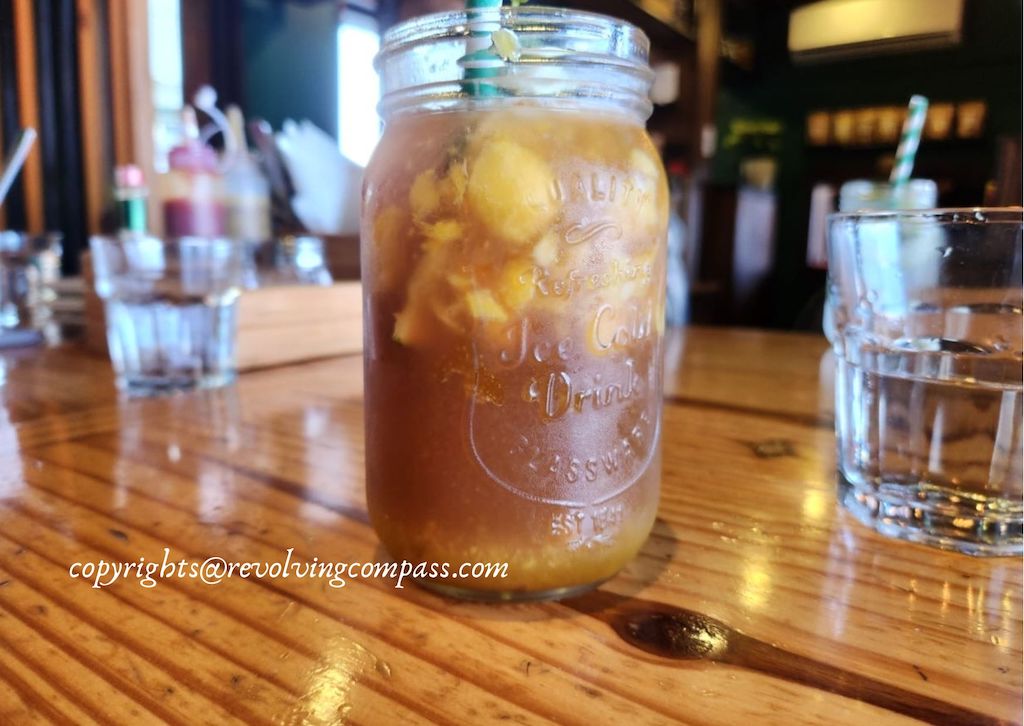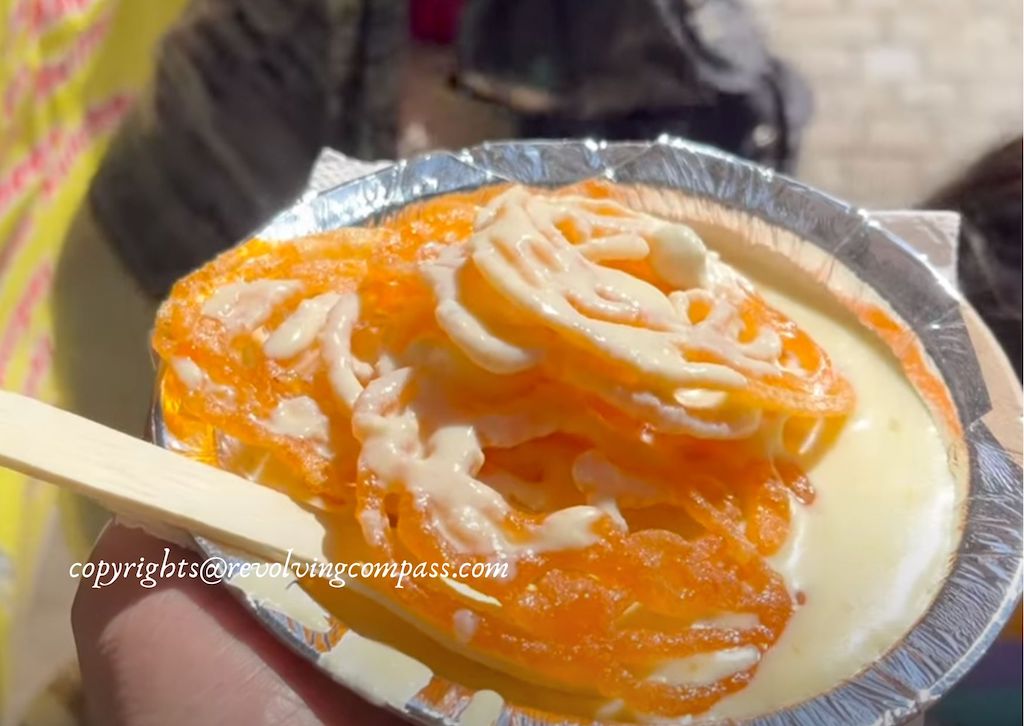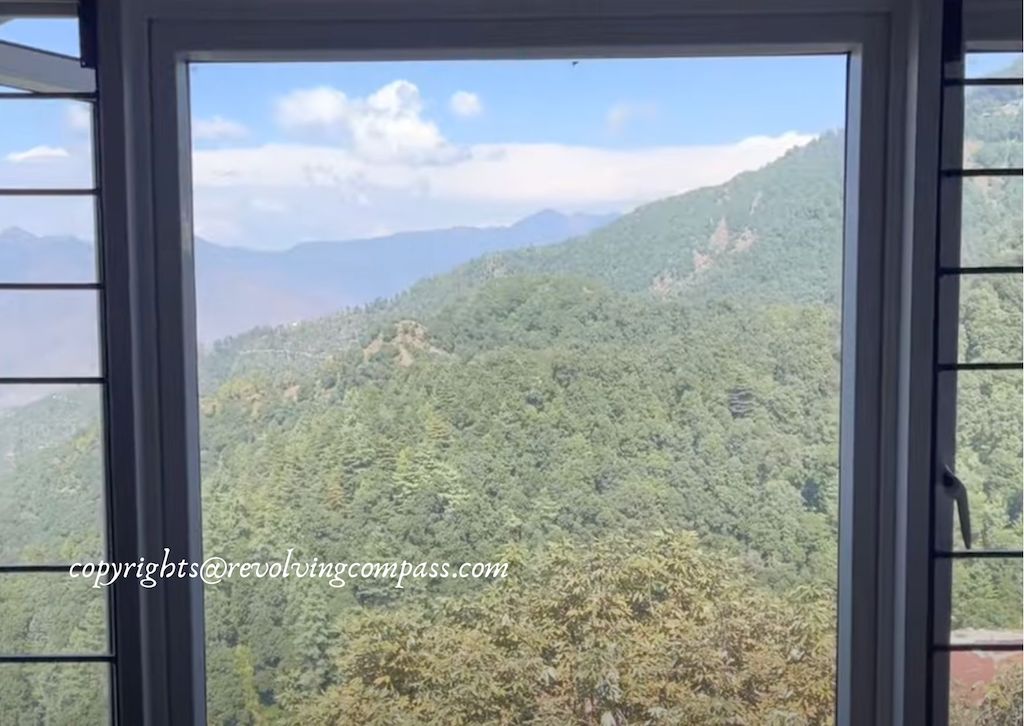In October 2023, we did a 6 days trip of Uttarakhand staying in Bhimtal, exploring Nainital, moving on to enjoy a staycation in Corbett and then finally, doing a road trip from Corbett to Mussoorie via Haridwar and Rishikesh. Although we had accounted for spending 2 days in Mussorie. But, due to this being a long weekend, there was so much rush from Dehradun to Mussoorie. That it took us more than 3 hours to complete the last 30 km of our journey. And we reached our hotel in Mussoorie only by night.
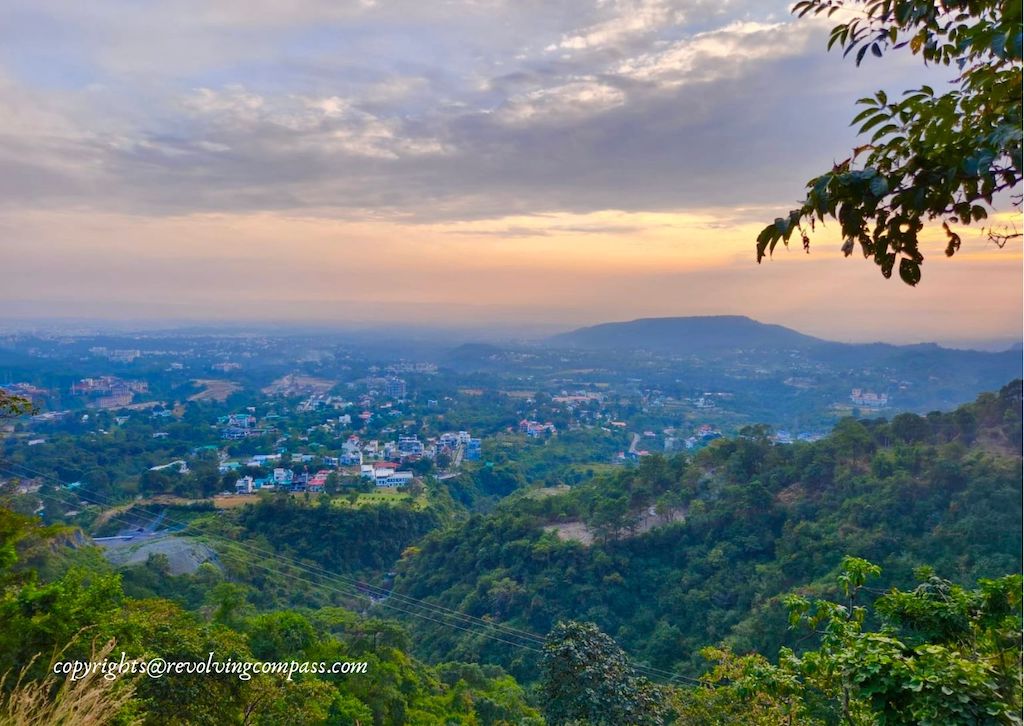
So, the next day, we decided to rather do a self planned walking tour of the Mall Road Mussorie. And just like our other self planned walking tours in the past, we will not only provide you here the list of places to cover on a self planned walking tour of the Mall Road Mussoorie. But also give you a google map of the destinations we stopped by on our way. So, lets get started
Map of our walking tour of the Mall Road Mussoorie
Map of Walking tour of the Mall Road Mussoorie
Walking tour of Mall Road Mussoorie
The concept of “Mall Road” came when the British were ruling India. These roads were like the main roads of the small hill station, thriving with traders and markets, supplemented by several food joints and iconic structures like libraries and churches . Just like how you find “squares” in most of the European cities. So, you will find a Mall Road in Nainital, one on your trip to Shimla and a mall road in Manali as well! I am sure there are more Mall Roads or similar main roads in other hill stations as well.
After our breakfast at Hotel Sarovar where were were staying in Mussoorie, we walked down to the starting point of Mall Road Mussoorie – Lal Chowk or Gandhi Chowk. It was a walk of almost 600-700 metres.
Lal Chowk or Gandhi Chowk
Serves as a central hub for shops, restaurants, and hotels. From Library Chowk, Mall Road extends for about 2 km towards Picture Palace, another prominent area in Mussoorie.

Although called a “chawk” which means the “junction of 4 roads”. Actually this is more like a square that you will find in most of the European towns and cities. With benches to sit. And the backdrop of mountains and valleys for that perfect holiday picture. We stayed here for almost 10 mins. Taking some pictures and admiring the views of the hills and valleys.
There are several hawkers here selling street side food like sev puri, bhel puri, cotton candies etc.

Library Chowk is named after the Mussoorie Library, a historic building located at the junction. The road is pedestrian-friendly, making it ideal for leisurely strolls and shopping. Although at it’s entrance, there is always a chaos. As several roads merge here and vehicles overtake each other all the time 🙂

Christ Church
Located near Library Chowk, Christ Church is a beautiful Gothic-style church built during the British colonial era. It’s one of the oldest churches in the Himalayan region and worth a visit for its architectural beauty and serene ambiance.
Tibetan Market
As you walk along Mall Road, you’ll come across the Tibetan Market, where you can find a variety of Tibetan handicrafts, souvenirs, and woolen garments. The cloths here are very reasonably priced. For example, the shawls price starts from INR 100/- and jackets from INR 200/-
Kulri Bazaar
Kulri Bazaar is a popular shopping area on Mall Road offering a wide range of items, including clothing, jewelry, handicrafts, and local snacks.
Camel’s Back Road

While not technically part of Mall Road, Camel’s Back Road starts from Library Chowk and runs parallel to Mall Road. It’s a scenic walking trail offering panoramic views of the Himalayas and the Doon Valley. You can always take a quick walk down here and come back up. You will see the whole road dotted with several road side shops selling woollen garments at dirt cheap price.
Gun Hill
Gun Hill, accessible from Mall Road via a cable car ride or a short trek, offers stunning panoramic views of the surrounding hills and valleys.
St. Paul’s Church
Situated near Picture Palace end of Mall Road, St. Paul’s Church is another historic church dating back to the British era. It’s known for its stained glass windows and peaceful surroundings.
Mussoorie Heritage Centre
Located at the farther end of our walking tour, this museum showcases the cultural and historical heritage of Mussoorie through exhibits, artefacts, and multimedia presentations. And it also served as the ending point of our walking tour of the Mall Road Mussoorie.
Municipal Garden (Company Garden)
While not directly on Mall Road, Municipal Garden is within walking distance. It’s a well-maintained park with lush green lawns, colorful flowerbeds, and a mini lake with paddle boats, making it a popular spot for families and picnickers. It lies a little before Library chowk. So, you can either start your walking tour from here. Or visit here at the end when you trace your steps back to the Library Chowk.
Cafes and Restaurants
Mall Road is dotted with numerous cafes and restaurants where you can enjoy a variety of cuisines, from local delicacies to international dishes. Some popular options include Lovely Omelette Centre, Chic Chocolate, and Urban Turban Bistro.
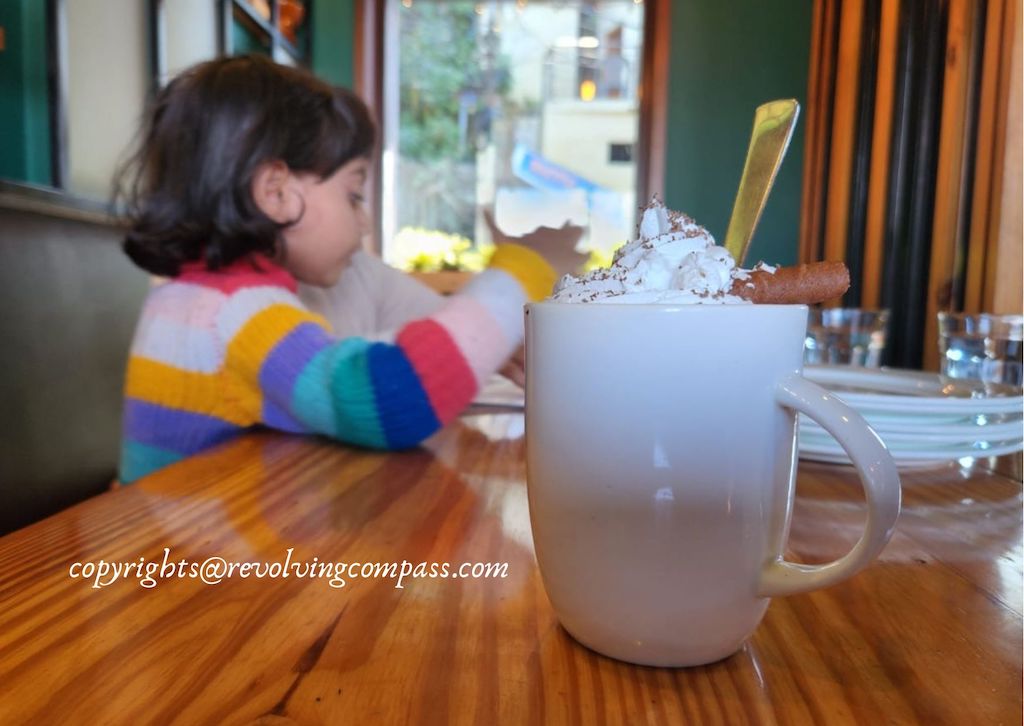
In fact, through our walking tour of the Mall Road Mussoorie, we almost stopped for food after every other site 🙂 As soon as we crossed Library Chowk, we stopped for soaking into the scenes of the mountain and enjoying the morning sun at a cafe. And then the kids stopped for ice cream from a road side icecream parlour near Lovely Omelette Centre. Further, we had a plate of Rabdi with Jalebi. And finally , we stopped at the famous Little Llama Cafe for a late lunch. And enjoyed every meal that we had throughout the day. The food definitely kept us fueled enough to cover the 10 km round trip from our hotel across the Mall Road Mussoorie.

General information on visiting Mussoorie
Mussoorie is one of the most famous hill stations of Uttarakhand (previously part of Uttar Pradesh) state of India. It is located at an altitude of ~2000m. As such, it enjoys particularly pleasant weather post monsoons from the months of October to March. Earlier, even summers in Mussoorie used to be very pleasant. But off late, due to impact of global warming and several other factors, the summers have become harsh in Mussoorie. And during monsoon season, the landslides have become a common phenomenon.
What is the best time to visit Mussoorie
The best time to visit Mussoorie is generally from March to June and September to November for pleasant weather. And then from December – February for enjoying the cold and snowfall.

Spring (March to April)
Spring is a delightful time to visit Mussoorie when the weather is pleasant, and the surrounding hills are adorned with blooming flowers. Temperatures are moderate, making it ideal for outdoor activities like trekking, nature walks, and sightseeing.
Summer (May to June)
Summer is the peak tourist season in Mussoorie when the weather is cool and refreshing, offering relief from the scorching heat of the plains. Although, temperatures during this time used to range from around 15°C to 25°C, making it perfect for exploring the town and enjoying outdoor activities. But, recently due to several environmental changes, the highest recorded temperature in this region goes as high as 40 degrees!! The summer months are ideal for activities like trekking, paragliding, and enjoying panoramic views of the Himalayas.
Monsoon (July to August)
Mussoorie receives moderate to heavy rainfall during the monsoon season, which can sometimes lead to landslides and roadblocks. While the lush greenery and misty atmosphere create a beautiful ambiance, outdoor activities may be restricted due to the rain. But, if you enjoy the tranquility of the hills during the monsoon and don’t mind occasional showers, Mussoorie can still be a charming destination to visit. Do make sure to check the road conditions and weather forecast when visiting during the monsoons to avoid landslides.
Autumn (September to November)
Autumn is another excellent time to visit Mussoorie when the weather starts to cool down gradually, and the monsoon retreats, leaving behind clear skies and crisp air. This season offers stunning views of the surrounding Himalayan peaks adorned with hues of orange and yellow as the leaves change color. It’s a great time for trekking, hiking, and enjoying leisurely walks amidst nature. We visited Mussoorie in Autumn. During this time, the days were warm while nights used to get chilly.
Winter (December to February)
Winter in Mussoorie is cold, with temperatures dropping below freezing point, especially during the night. Given, snowfall is a common occurrence in Mussoorie during the winter months, adding to its charm and attracting snow enthusiasts. And winter sports like skiing and snowboarding are popular activities during this time, and the town takes on a magical ambiance with snow-covered landscapes.
Ultimately, the best time to visit Mussoorie depends on your preferences and the type of experience you seek, whether it’s enjoying the pleasant weather of spring and autumn, the vibrant atmosphere of summer, or the snowy landscapes of winter.
How to reach Mussoorie

To reach Mussoorie, you have several options depending on your starting point and mode of transportation:
By Air
The nearest airport to Mussoorie is the Jolly Grant Airport in Dehradun, which is about 54 kilometers away. From the airport, you can hire a taxi or take a bus to Mussoorie. Several airlines operate flights to Dehradun from major cities like Delhi, Mumbai, and Bangalore.
By Train
The nearest railway station to Mussoorie is Dehradun, which is well-connected to major cities in India. From Dehradun railway station, you can hire a taxi or take a bus to reach Mussoorie.
By Road
- From Delhi: Mussoorie is approximately 290 kilometers away from Delhi. You can drive to Mussoorie via NH44 and NH334. Or, even take a bus from Delhi to Mussoorie. There are several private and state-run buses operating between Delhi and Mussoorie.
- From Dehradun: Mussoorie is only 35 kilometers away from Dehradun. You can hire a taxi or take a bus from Dehradun to Mussoorie. The road from Dehradun to Mussoorie offers scenic views of the hills and valleys. And is dotted with countless cute cafes and restaurants on the way, hanging on the cliffs. And providing mesmerising views of the valley below.
- From other nearby cities: Mussoorie is well-connected by road to other nearby cities like Haridwar, Rishikesh, and Chandigarh. You can either drive to Mussoorie or take a bus from these cities.
By Shared Taxi or Cab
Shared taxis or cabs are also available from nearby towns and cities like Dehradun, Rishikesh, and Haridwar. These are a convenient option if you prefer not to drive yourself.
Make sure to check the roads and weather conditions for a safe journey. Like I said at the beginning of this article, we traveled to Uttarakhand using a hired cab for full 6 days. First, we reached from Bangalore to New Delhi by air. We hired the cab for a round trip journey from New Delhi. And as a part of this journey we also covered Bhimtal, Nainital and Corbett National Park. Although, Dehradun is closer airport to Mussoorie and other places to visit in Uttarakhand. But the flights to Dehradun were more costly. Thats why we planned to fly into New Delhi and then do a trip from there.
Where to stay in Mussoorie

From homestays and backpacker friendly budget B&Bs to luxury resorts, Mussoorie has an accommodation for all kind of taste and budget range. Some of the best luxury stay options in Mussoorie include –
What are other places to visit in Mussoorie
Kempty Falls

Almost a synonym to the beauty of Mussoorie. One of the most famous waterfalls in the region, Kempty Falls is located about 15 kilometers from Mussoorie. It’s a popular spot for picnics and swimming in the natural pools formed by the cascading water.
Jharipani Falls:
Another beautiful waterfall, situated about 8 kilometers from Mussoorie. Jharipani Falls is a picturesque waterfall surrounded by lush greenery. It’s an ideal spot for a refreshing dip or a leisurely picnic.
Lal Tibba
Lal Tibba is the highest point in Mussoorie and offers magnificent views of the snow-capped peaks of the Himalayas. There’s a telescope installed at the viewpoint to get a closer look at the distant mountains.
Cloud’s End
Tucked away in the midst of dense forests, Cloud’s End marks the end of Mussoorie. It’s a serene spot for nature walks amidst oak and deodar trees and offers splendid views of the surrounding wilderness.
Happy Valley

Happy Valley is a Tibetan settlement in Mussoorie, known for its Tibetan Buddhist temples, monasteries, and colorful prayer flags. It’s a peaceful retreat where you can immerse yourself in Tibetan culture and spirituality.
Benog Wildlife Sanctuary
Located about 11 kilometers from Mussoorie, Benog Wildlife Sanctuary is home to diverse flora and fauna, including Himalayan birds like the red-billed blue magpie and mountain quail. It’s a paradise for nature lovers and birdwatchers.
Landour

Located just 5 km from the town centre of Mussoorie, Landour offers a much more offbeat and secluded experience to it’s visitors. Although it has several points of interest to visit. Like buildings with colonial architecture, Char Dukan – a famous cluster of 4 small shops selling refreshments that is like the focal gathering point for locals. Several trekking paths. And unlimited cafes and bakery. Landor is less crowded than Mussoorie and hence provides it’s visitors more secluded and peaceful holiday experience.
What to pack for a trip to Mussoorie
Pack light cloths for the day, and heavier jackets & proper woollen sweaters and caps for the night when heading to Mussoorie during autumn and spring. And lighter jackets for summer evenings. But you will need heavy winter gear when visiting in the core winter months. When snowfall happens, then the temperature may dip suddenly. Carry these heavy winter jackets, gloves, snow boots, mufflers, caps and sweater for the winter months. Apart from these, for general packing list, you can check our travel packing tips and tricks. And this general list of medicines that we always carry with us on our travel.
What kind of food will I get in Mussoorie
If there is one thing that abounds in Mussoorie more than anything else, it is the sheer number of cafes, restaurants and even road side stalls. There is no dearth of food of any type in Mussoorie. You can get english breakfast and numerous varieties of coffees in some of these cafes. From Thin crust Italian Pizza to desi roti and north Indian veggies. From South Indian delicacies to chinese food, you will get everything in Mussoorie. So, you need not worry at all about it.
Some of the most famous restaurants and cafes in Mussoorie include Kalsang Friends corner, Chic Chocolate, Little Llama Cafe (that we tried), Lovely Omelette Centre, Urban Turban Bristo, Cafe Ivy, Emily’s and Char Dukan.
